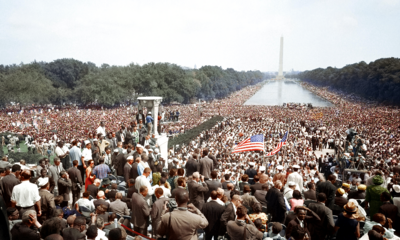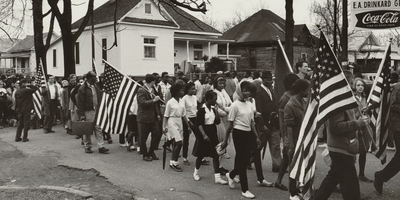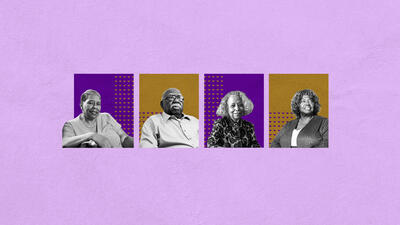The Civil Rights Movement is a story of people who believed they could bring about change. Learning from the movement gives us models and strategies for action in our communities and our nation to create a more just society. Realizing one’s own capacity for action is an essential disposition for responsible citizenship. As we grow in understanding this history and its ongoing relevance to our lives, we can examine today’s justice issues and find ways to answer the questions: “How can I make a difference?” “How can we make a difference together?”
The Torch Is Passed to You
To make the vision of a just and peaceful world a reality, we must have the tools to build a strong, multiracial, inclusive democracy – and those tools include an honest history of the United States.
From the first acts of Black resistance to enslavement in the United States to the current movement for justice and civil rights, the long tradition of the Black freedom struggle spans the history of our nation. The Civil Rights Movement of the 1950s and 1960s was a particular era within a longer time frame of the Black movement for equality and civil rights.
Learning from our history is not simply about knowing dates, famous people and events. When we engage in deeper learning, we think about, analyze and make connections. We recognize that we are not only learning about the past, but rather how society today is shaped by that past.
Political, social and economic equality have yet to be achieved. Increasing pushback against a more inclusive society challenges us all to become more conscious about the knowledge and skills to participate in democracy.
Remember, our rights and freedoms were achieved through the struggles, risks and sacrifices of ordinary people in the South and from across the nation who participated in the Civil Rights Movement. They were the backbone of the movement. And that torch has been passed to us.
Learning, Reflection and Action
Our goal is not simply to learn about the Civil Rights Movement but to learn from the movement. The learning journeys and resources in this series examine key concepts and events of the Civil Rights Movement to contextualize the history and grow our understanding of the dynamic of people, power and change.
Strategies of the Civil Rights Movement
The 1963 March on Washington
Freedom Summer and Today's Election Process
Hostile Opposition to the Civil Rights Movement
Selma: From the Bridge to the Ballot
History and the Power of Place
The Civil Rights Movement: 10 Key Concepts
Resources
“When historians pick up their pens to write the story of the 21st century, let them say that it was your generation who laid down the heavy burdens of hate at last and that peace finally triumphed over violence, aggression and war. So I say to you, walk with the wind, brothers and sisters, and let the spirit of peace and the power of everlasting love be your guide.”
– John Lewis
The Power of Place
Teaching the Civil Rights Movement
Teaching Hard History, Season 3: The Civil Rights Movement
[Main illustration images: 1) Martin Luther King, Jr. at the 1963 March on Washington; 2) visitors to the Civil Rights Memorial in Montgomery, Alabama; 3) President Barack Obama, Rep. John Lewis, Michelle Obama and marchers in 2015 mark the 50th anniversary of the Selma March; 4) Annie Devine, Fannie Lou Hamer and Victoria Gray.]










